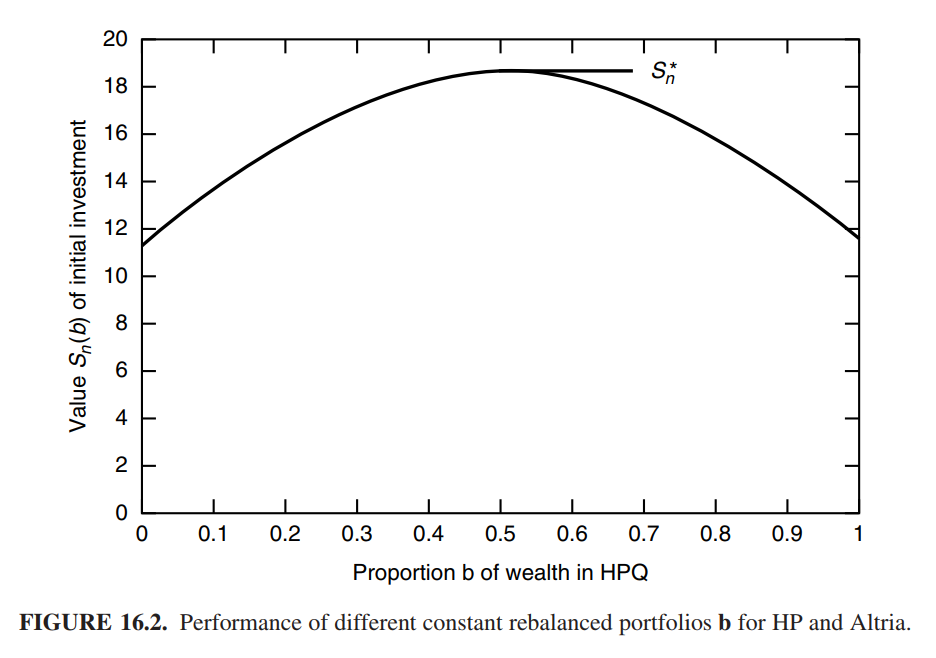'''Functions for drawing contours of Dirichlet distributions.'''
# Author: Thomas Boggs
# https://gist.github.com/tboggs/8778945
import numpy as np
import matplotlib.pyplot as plt
import matplotlib.tri as tri
from functools import reduce
_corners = np.array([[0, 0], [1, 0], [0.5, 0.75**0.5]])
_triangle = tri.Triangulation(_corners[:, 0], _corners[:, 1])
_midpoints = [(_corners[(i + 1) % 3] + _corners[(i + 2) % 3]) / 2.0 \
for i in range(3)]
def xy2bc(xy, tol=1.e-3):
'''Converts 2D Cartesian coordinates to barycentric.
Arguments:
`xy`: A length-2 sequence containing the x and y value.
'''
s = [(_corners[i] - _midpoints[i]).dot(xy - _midpoints[i]) / 0.75 \
for i in range(3)]
return np.clip(s, tol, 1.0 - tol)
class Dirichlet(object):
def __init__(self, alpha):
'''Creates Dirichlet distribution with parameter `alpha`.'''
from math import gamma
from operator import mul
self._alpha = np.array(alpha)
self._coef = gamma(np.sum(self._alpha)) / \
reduce(mul, [gamma(a) for a in self._alpha])
def pdf(self, x):
'''Returns pdf value for `x`.'''
from operator import mul
return self._coef * reduce(mul, [xx ** (aa - 1)
for (xx, aa)in zip(x, self._alpha)])
def sample(self, N):
'''Generates a random sample of size `N`.'''
return np.random.dirichlet(self._alpha, N)
def draw_pdf_contours(dist, border=False, nlevels=200, subdiv=8, **kwargs):
'''Draws pdf contours over an equilateral triangle (2-simplex).
Arguments:
`dist`: A distribution instance with a `pdf` method.
`border` (bool): If True, the simplex border is drawn.
`nlevels` (int): Number of contours to draw.
`subdiv` (int): Number of recursive mesh subdivisions to create.
kwargs: Keyword args passed on to `plt.triplot`.
'''
from matplotlib import ticker, cm
import math
refiner = tri.UniformTriRefiner(_triangle)
trimesh = refiner.refine_triangulation(subdiv=subdiv)
pvals = [dist.pdf(xy2bc(xy)) for xy in zip(trimesh.x, trimesh.y)]
plt.tricontourf(trimesh, pvals, nlevels, **kwargs)
plt.axis('equal')
plt.xlim(0, 1)
plt.ylim(0, 0.75**0.5)
plt.axis('off')
if border is True:
plt.hold(1)
plt.triplot(_triangle, linewidth=1)
def plot_points(X, barycentric=True, border=True, **kwargs):
'''Plots a set of points in the simplex.
Arguments:
`X` (ndarray): A 2xN array (if in Cartesian coords) or 3xN array
(if in barycentric coords) of points to plot.
`barycentric` (bool): Indicates if `X` is in barycentric coords.
`border` (bool): If True, the simplex border is drawn.
kwargs: Keyword args passed on to `plt.plot`.
'''
if barycentric is True:
X = X.dot(_corners)
plt.plot(X[:, 0], X[:, 1], 'k.', ms=1, **kwargs)
plt.axis('equal')
plt.xlim(0, 1)
plt.ylim(0, 0.75**0.5)
plt.axis('off')
if border is True:
plt.hold(1)
plt.triplot(_triangle, linewidth=1)
if __name__ == '__main__':
# f = plt.figure(figsize=(8, 6))
# alphas = [[0.999] * 3,
# [5] * 3,
# [2, 5, 15]]
alphas = [[5] * 3]
for (i, alpha) in enumerate(alphas):
plt.subplot(2, len(alphas), i + 1)
dist = Dirichlet(alpha)
draw_pdf_contours(dist, cmap='hot')
title = r'$\alpha$ = {}'.format(alpha)
plt.title(title, fontdict={'fontsize': 12})
# plt.subplot(2, len(alphas), i + 1 + len(alphas))
# plot_points(dist.sample(5000))
plt.savefig('dirichlet_plots.png')
print('Wrote plots to "dirichlet_plots.png".')
